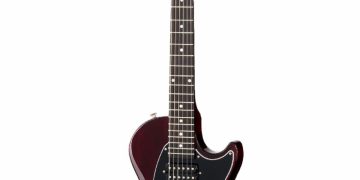 U.S. retail sales during the 2023 holidays rose 3.1 percent over last year, according to figures from Mastercard – which isn’t bad considering consumers are still feeling the pinch of inflation.
U.S. retail sales during the 2023 holidays rose 3.1 percent over last year, according to figures from Mastercard – which isn’t bad considering consumers are still feeling the pinch of inflation.
But another number is also going up. U.S. shoppers were expected to return $173 billion worth of holiday purchases this year, 28 percent more than last year, according to Optoro, a firm that helps retailers manage returns. Optoro CEO Amena Ali told Reuters recently, “Our returns Super Bowl starts the day after Black Friday and goes into February.” While the immediate “post-holiday” season is now past us, the phenomenon of mass-returns of purchases is an evergreen, year-round concern.
Returned products are a drag on the bottom line. They must be inspected and repackaged, which takes valuable time. Plus, the business is taking a chance that the instrument or gear won’t go out of favor or fashion before it can be resold.
It’s unlikely most returns can be resold at full price, so even brand-new merchandise can end up at a liquidation warehouse or in the trash heap.
Rather than disposing of musical merchandise or selling it to a liquidation warehouse, where you can’t control brand identity, consider donating returned merchandise in-kind to a nonprofit. The resulting tax break for eligible C Corporations may be quite handsome, and it may even be more financially beneficial than reselling the merchandise at a cut-rate price.
Giving in-kind, though, comes with its own headaches. The business must vet every nonprofit organization, making sure it will accept the products on offer, understanding how it will be valued, and figuring out how and where merchandise has to be delivered.
In-kind donation organizations – of which there are several in the U.S. – do that legwork on behalf of businesses.
What’s in it for them? These organizations provide free products to qualified 501(3)(c) nonprofits, which use them to serve more people in their communities. Gifts in kind organizations may have hundreds of nonprofits as members that pay a nominal handling fee in order to have access to first-quality goods.
Thanks to the generosity of corporate donors, quality, brand new merchandise is given each year to schools, churches and qualified non-profits, allowing them to stretch their budgets, get more done with less money and even expand services by offering people the opportunity to have a musical instrument.
Donated merchandise runs the gamut from instruments to educational supplies and safety supplies to books, clothing and accessories. NAEIR accepts donations at its 450,000-square-foot warehouse in Galesburg, Illinois, relieving businesses of inventory, returns and overruns.
What’s in it for businesses? Giving in-kind creates good public relations, supports corporate philanthropy goals and provides assurance that merchandise won’t end up on the open market or have its brand diluted.
Plus, a company may qualify for a substantial tax deduction under Section 170(e)(3) of the Internal Revenue Code. Regular C corporations that donate inventory to qualified nonprofits can receive a tax deduction equal to up to twice the cost of the donated products.
Under the tax code, deductions are equal to the cost of the inventory donated, plus half the difference between the cost and fair market-selling price, not to exceed twice the cost.
For example, if a product costs $10 and retails for $30, the difference is $20. Half of $20 is $10. So, $10 (product cost) plus $10 (half the difference) equals a $20 deduction. As $20 does not exceed twice the product cost, it is an allowable deduction.
There’s no one solution to the issues caused by customer returns, but in-kind donation can be a small part of the solution for your MI business.
Gary C. Smith is president and CEO of NAEIR, National Association for the Exchange of Industrial Resources, the largest gifts-in-kind organization in the U.S. Galesburg, Ill.-based NAEIR. www.NAEIR.org ) has received donations of excess inventory from more than 8,000 U.S. corporations and redistributed more than $3 billion in products to non-profits and schools. Gary can be reached at (800) 562-0955.




























